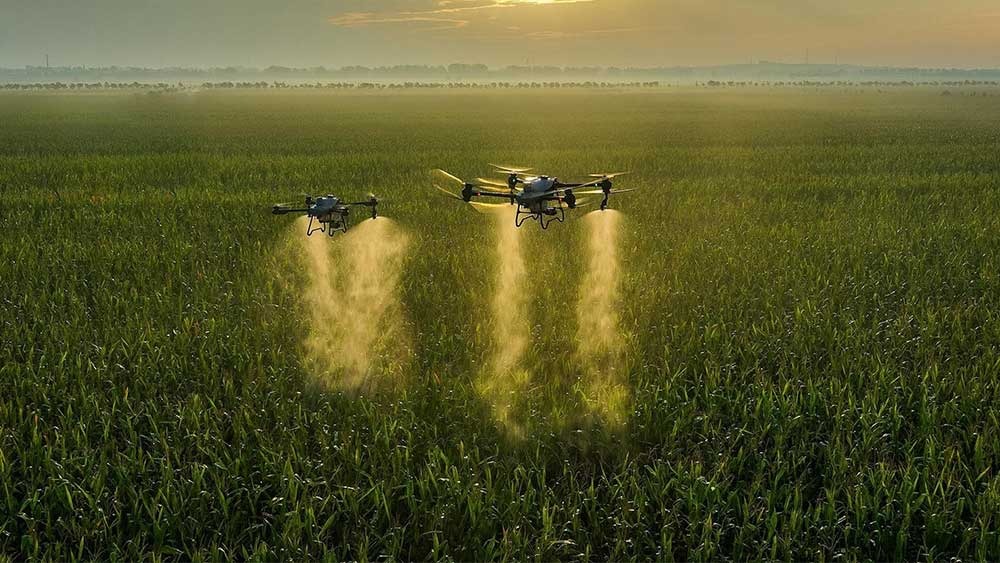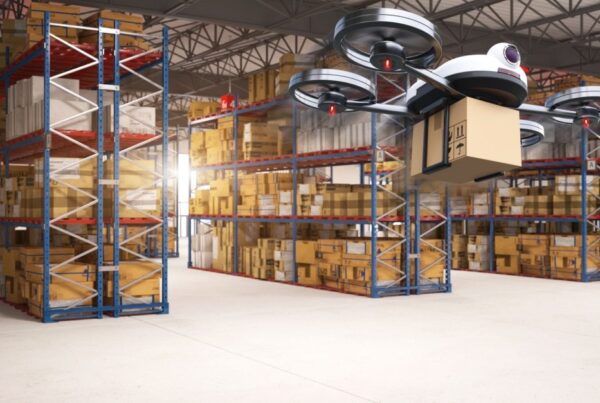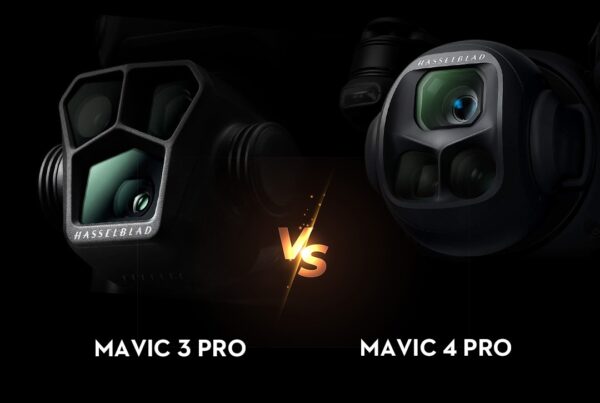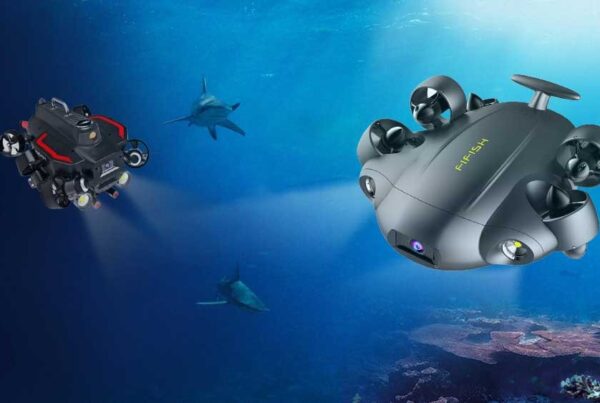
Agriculture is experiencing a major transformation with the advancement of drone technology. By 2025, agricultural drones have become vital tools for farmers, providing unmatched efficiency, precision, and cost-effectiveness. These drones are designed to optimize various farming tasks, including crop monitoring, precision spraying, and yield estimation. As a result, they significantly boost productivity and reduce operational costs. Additionally, these innovations are reshaping the farming industry, fostering more sustainable and efficient farming practices.
The Role of Sophisticated Drones in Agriculture
As technology progresses, drones have moved beyond their initial role as surveillance tools. They are now integral to precision agriculture, streamlining every aspect of farming for maximum efficiency and sustainability. Modern drones feature high-precision spraying systems, enabling the uniform application of fertilizers, pesticides, and herbicides while minimizing wastage. This capability ensures that resources are used more effectively, leading to both increased productivity and environmental sustainability.
These drones feature automated variable rate application (VRA), which allows for precise chemical dispensing based on crop needs. Equipped with high-flow pumps and staged spray nozzles, they quickly cover large areas, reducing labor hours and optimizing resource use. Additionally, adaptive flight control systems prevent errors caused by challenging terrains, ensuring these drones adapt seamlessly to various agricultural landscapes. This capability boosts efficiency, accuracy, and sustainability across diverse farming environments.
Smarter Mapping and Terrain Awareness
These day’s farming drones are not only equipped with elementary flight maneuvers but possess AI-aided mapping and intelligent routing planning to analyze the state of the field and execute activities more efficiently. Real-time terrain sensing technology allows them to fly over uneven fields with maximum altitude, providing even spraying. Intelligent route planning maximizes working efficiency by reducing overlap and unnecessary repetition. With centimeter-level accuracy, thanks to high-precision RTK (Real-Time Kinematics) modules, these drones prove to be highly beneficial for precision agriculture.
Agricultural Drone: Constructed to Last and Work Anywhere
Agriculture never stops when the weather is unforgiving, and technology is no exception. Built to last, today’s drones are waterproof and dustproof, thus making them capable of running smoothly under harsh conditions. Their carbon fiber construction with high strength makes them tough yet light and responsive. Special wind-resistance technology enables them to glide well even in moderate wind, and hence they become season-proof tools.
Flexibility in Agric Operations
Drone agriculture goes far beyond just spraying. With their multi-payload capabilities, drones can perform various essential tasks in addition to chemical application:
Crop Health Monitoring: Equipped with multi-spectral and RGB cameras, drones detect early signs of disease, pest infestations, or nutrient deficiencies.
Seeding and Fertilizer Granularization: Using advanced dispersion systems, drones can uniformly sow seeds and apply fertilizers to promote even crop growth.
Yield Estimation and Data Analytics: AI-driven software processes field data, enabling farmers to maximize yields and make informed decisions on crop management.
The DJI Agras Series – Raising Agricultural Drone Technology
Among agricultural drone technology’s top leaders is DJI, which has crafted the Agras series of drones with a series of drones specific to various agricultural requirements. The DJI Agras T10, T25, T30, T40, and T50 are part of this offering, each introducing new features that improve farming effectiveness.
DJI Agras T10: This is a compact variant for small-scale farms, featuring a 10-liter tank capacity and a robust but light frame for quick and efficient spraying.
DJI Agras T25: An efficient and payload-capable medium-sized drone with a 25-liter tank and state-of-the-art terrain-following for precision application.
DJI Agras T30: For bigger operations, with a 30-liter capacity, efficient spraying systems, and intelligent route planning for optimal coverage.
DJI Agras T40 : For commercial-level farming, with dual-tank systems, a 40-liter capacity, and improved AI for intelligent farming insights.
DJI Agras T50: The most powerful model of the series, with a 50-liter tank, ultra-high efficiency, and precise spraying, which is the preferred choice for large farmlands.
Agricultural Drone: Scalability for Various Farming Requirements
The versatility of drone technology allows farms of all sizes to harness its efficiency. The DJI Agras series offers a range of solutions, ensuring that both small and large farms can benefit. Whether a farmer has a few acres or expansive fields, there’s a drone to suit their needs. From the compact Agras T10 for small farms to the advanced Agras T50 for commercial fields, these drones provide tailored solutions for any agricultural requirement.
Ease of Use and Automation
Despite their advanced technology, today’s agricultural drones are designed for ease of use, allowing farmers to operate them without specialized training. Single-tap automatic flight modes enable quick and smooth deployment. Additionally, integrated obstacle avoidance sensors improve safety by preventing crashes and disruptions. With long battery life and fast charging, these drones minimize downtime, ensuring large farming operations run smoothly and without interruption.
The Future of Agriculture through Drone Technology
While the farming industry continues to adapt technology, drones are set to take center stage when it comes to precision farming, resource optimization, and environmentally friendly farming. Their ability to reduce labor, enhance productivity, and provide immediate data information has seen them transform the future of farming.
Why are Drones Emerging as Must-Haves in Agriculture?
Low-Cost Agriculture: Drones help reduce costs and optimize the use of available resources for better farm management.
Increased Yield & Productivity: They maximize every square meter of land, boosting crop yields and overall productivity.
Eco-Friendly Strategy: By reducing wastage and promoting sustainable practices, drones support environmentally friendly farming.
Data-Driven Decision Making: AI-driven insights enable farmers to make informed decisions, improving farm efficiency and outcomes.
Conclusion
Farm drones are no longer just a concept—they are a reality revolutionizing agriculture today. Equipped with precision technology, automation, and a focus on sustainability, they provide farmers with a practical solution. From spraying and seeding to monitoring and analytics, these drones are reshaping farming practices, making them more efficient, productive, and sustainable. With the DJI Agras T10, T25, T30, T40, and T50, farmers can harness cutting-edge technology that boosts productivity and streamlines operations. As a result, purchasing agricultural drones is no longer optional—it is essential for staying competitive in 2025 and beyond.




